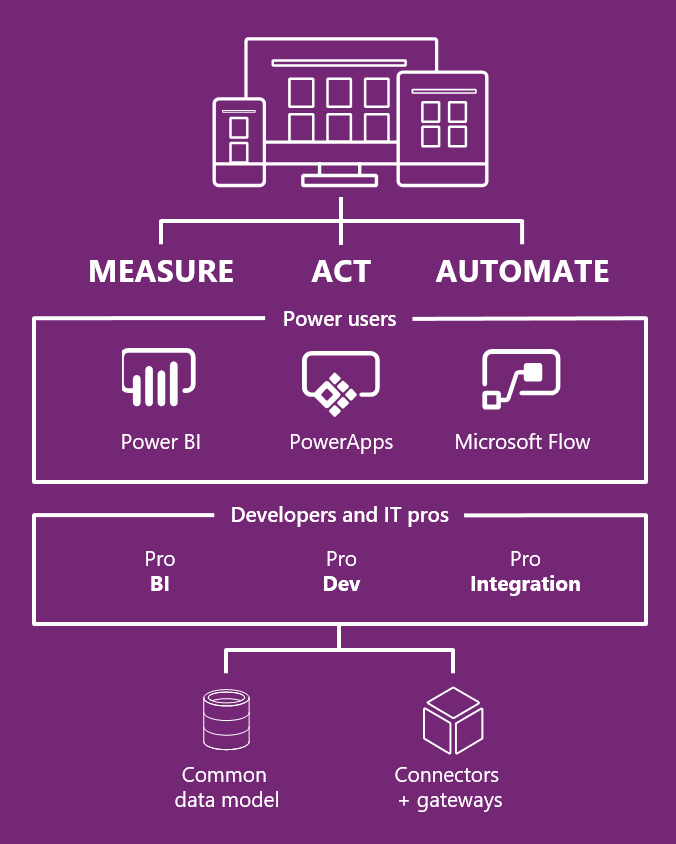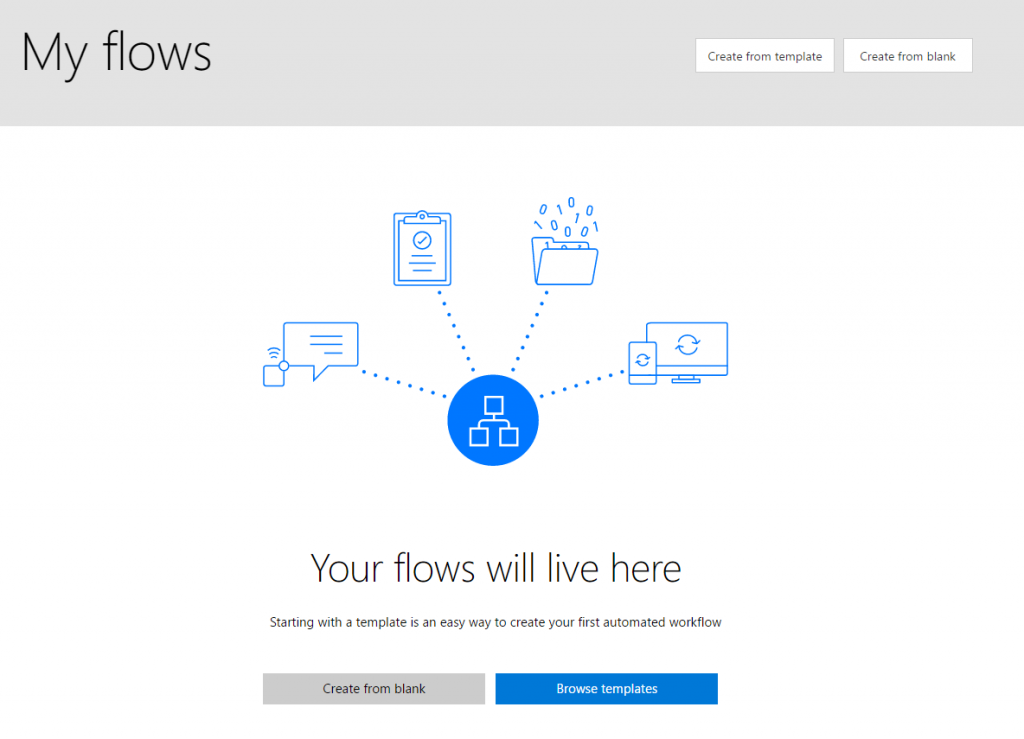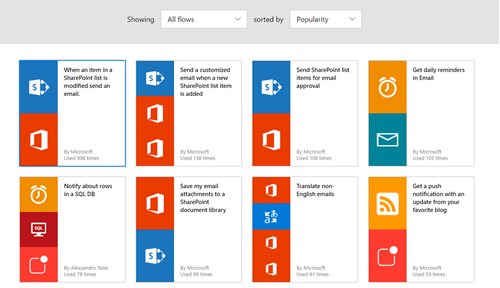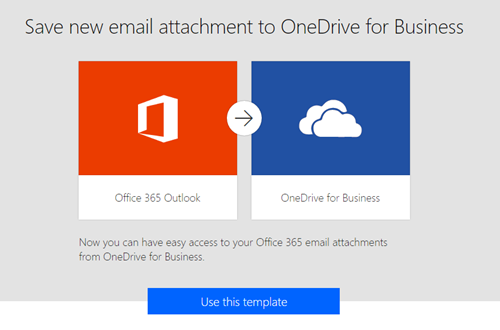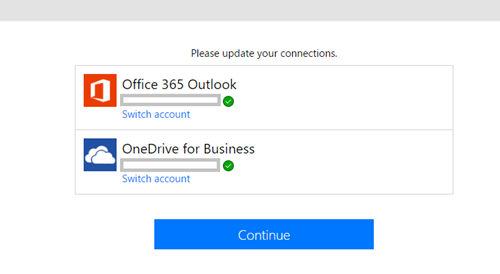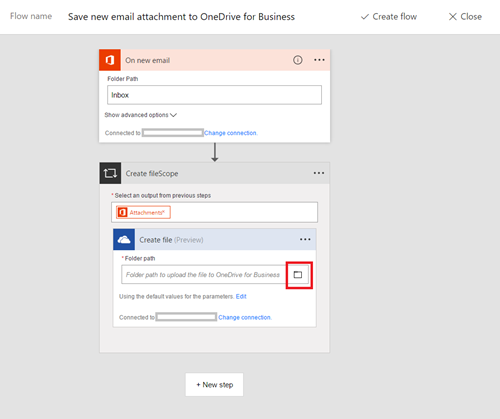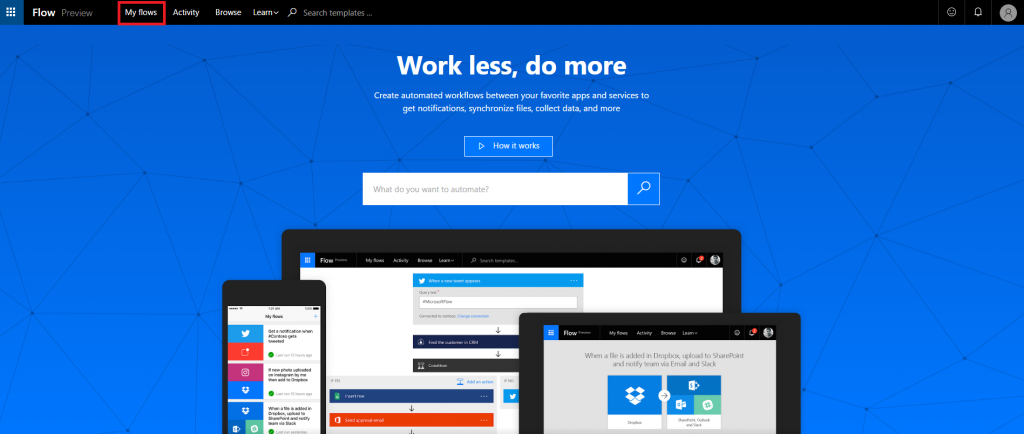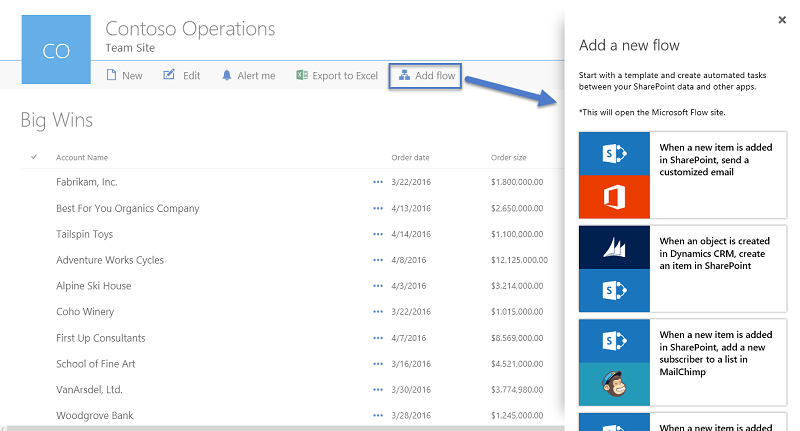Microsoft Flow is going to be a key component for Microsoft products, helping to tie together your Microsoft cloud services, as well as non-Microsoft cloud services.
It allows end users to automate business processes through workflows that can be created without any coding skills by simple templates and drag and drop functionality. This is going to open a lot of opportunities for everyday users to be able to automate their own processes, such as getting an alert when their boss emailed them, without having to rely on IT departments and developers.
Microsoft have already started hinting at how Flow (and PowerApps) will play an important role in their core services. The main discussions have been around SharePoint and Office 365 but with the upcoming launch of Dynamics 365 we have already started to see Flow and PowerApps heavily mentioned in the future of Dynamics 365.
